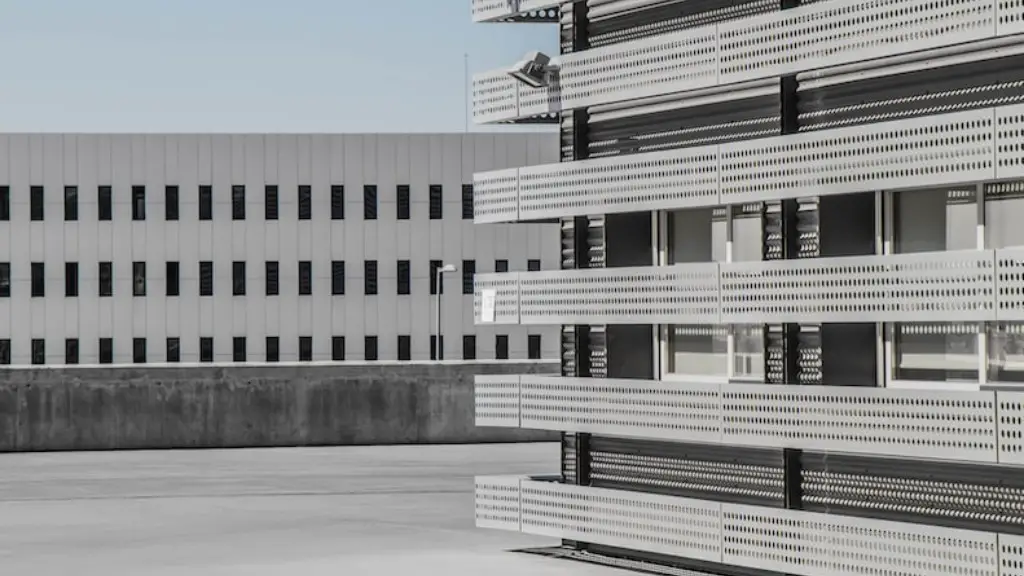Architecture is one of the most challenging, time-intensive and stressful disciplines one can pursue. Architects must manage and coordinate many different aspects of a project – from design, materials selection, and working with clients, to meeting financial constraints, safety regulations, and scheduling. Every part of the process is important and one mistake can have serious repercussions, making it difficult to manage multiple tasks while avoiding the onset of stress.
The first source of stress for any architecture project is the vast amount of knowledge and understanding it takes to do the job properly. Architects must not only be experts in the technical aspects of their work, but must also be creative problem-solvers and master communicators. This means having an extensive understanding of the building process, materials, regulations, and codes, as well as the ability to quickly come up with solutions and make changes in response to unforeseen events.
In addition to the technical expertise, architects must also possess time management skills and be able to work quickly and efficiently – something that can be difficult when you’re dealing with so many different aspects at once. Architects juggle the demands of their client, the budget, and a timeline, all while being mindful of safety standards and regulations. On top of this, architects often have to liaise with different stakeholders, such as contractors and engineers, which can add another layer of complexity to the project.
Architecture also involves dealing with large companies and organizations, which invariably comes with its own unique stressors. Architects must often balance the client’s wishes with the practical constraints of the project, meaning they must develop creative solutions that might not always be feasible. This can often mean difficult conversations and uncomfortable compromises, something that not everyone enjoys doing.
Architecture also carries with it the risk of failure – when a project doesn’t go according to plan, or falls behind schedule. This can be both stressful and disheartening, as architects will face criticism from clients, and need to continuously adjust their plans in response to changing circumstances.
Finally, architects must also take into account the emotional and psychological toll their job can take on them. Architects often feel the pressure to meet their client’s high expectations and are constantly managing the importance of craftsmanship against the practicality of budget and time constraints. Throw in the physical strain involved in being on your feet for hours at a time, and it’s easy to see why architecture can be an incredibly taxing profession.
Coping with Stress in Architecture
In order to reduce the amount of stress associated with architecture, there are some steps that can be taken. The first is to ensure that there is effective communication and collaboration between all stakeholders involved in the project, from the client to the different contractors. This will help to ensure that everyone is on the same page and that any changes or adjustments that need to be made are quickly addressed.
Another effective way of mitigating stress is to plan ahead. Architects should be sure to anticipate any obstacles that might arise, as well as create contingencies to deal with them. This will help to save time and energy so that the architect can focus on the creative aspects of their job.
Having a good understanding of the building process is also essential for reducing stress levels. Architects should be sure to research and familiarize themselves with the different materials and regulations that apply to their projects, as this will help them to stay on top of any potential issues.
Finally, architects should ensure that they take time for themselves. Prioritizing self-care is essential for maintaining a healthy work-life balance that will help to reduce anxiety and protect against burnout.
The Long-Term Benefits of Architecture
Although it can be an incredibly stressful profession, architecture can also be a rewarding career path. Architects have the unique opportunity to not only bring their creative ideas to life, but to also contribute to their communities by designing aesthetically pleasing, functional, and thoughtfully composed buildings and structures.
Architects can take pride in the products of their labor and the knowledge that the structures they design will be around for many years to come. This is why many architects view the architecture profession as one of the most satisfying and fulfilling disciplines, despite the stress that it can bring.
Architects also benefit from the creative outlets that their work allows. They get to explore their artistic side and express themselves through their designs. Additionally, architects benefit from the connections they make over the course of a project, including other architects and professionals, as well as the clients they work with.
Architects often get to see the direct results of their work and the appreciation that comes from their clients when they are able to deliver an exceptional product. This is rewarding in its own right and can be a great source of motivation for any architect.
Fostering a Positive Attitude
When it comes to facing the challenge of architecture and reducing stress, having a positive attitude can make all the difference. Architects should remember that the job is not about perfection, but about exploring possibilities and adaptation. Additionally, architecture requires a certain degree of humility, as no one can know everything and mistakes are inevitable. As such, it’s important to accept such mistakes and use them as learning opportunities.
It’s also important for architects to remember that their job is about collaboration and connecting with other people. Learning how to communicate effectively with all stakeholders on a project can help to reduce stress and ensure a smooth working relationship. Showing respect and being willing to listen to others are essential to finding creative solutions and maintaining positive working relationships.
Finally, architects should also bear in mind that the role of an architect is to create something meaningful and enduring. It’s important to remember this and focus on the impact that their work can have, rather than worrying about the stress associated with it.
Establishing a Healthy Work-Life Balance
A major contributor to stress is the lack of balance between one’s personal and professional life. This can lead to feeling overwhelmed, overworked, and exhausted which can in turn lead to burnout. Architects should be sure to prioritize their well-being in order to avoid this trap by carving out time for themselves to relax and pursue activities they enjoy.
Travelling is also a great way for an architect to de-stress and get inspired. Exploring new places, cultures, and ideas can open up new creative possibilities as well as help to reinvigorate someone feeling overwhelmed from their work.
It is also important for architects to communicate their needs and boundaries to their clients. Architects should not be afraid to assert themselves and set limits in order to maintain a healthy work-life balance.
Finally, architects should look for ways to make their job easier. Making use of the latest technology, tools, and software can help to automate mundane tasks and simplify complex ones. It can also be helpful to establish a supportive network as a means of emotional support.
The Benefits of Professional Development
Continuous learning and professional development is an important part of managing stress in architecture. Keeping up with the latest trends and techniques, as well as honing one’s technical and creative skills, will help architects to stay ahead of the curve.
Joining professional organizations and taking part in conferences, events, and workshops can be a great way to stay connected with other architects and learn from their experiences. This can help to keep an architect’s enthusiasm level high and provide valuable insight into how other professionals have fared in similar situations.
Learning new skills such as time management and communication can also help to reduce stress. Being able to efficiently manage tasks, prioritize, and delegate will give architects more headspace to focus on the creative elements of their work.
Additionally, keeping a portfolio is a great way for architects to stay on top of their work and think of new ways to approach projects. This can help to keep an architect motivated, excited, and energized which will help to reduce stress.
Stress Management
Stress is an inevitable part of being an architect, however, it is possible to manage the buildup of stress with a few simple steps. Regular check-ins with oneself can help to identify and address any feelings and emotions that might be brewing. Establishing clear boundaries, acknowledging mistakes and using them as learning opportunities, and seeking support from colleagues, can all help to reduce stress. Additionally, developing creativity, working smarter and not harder, and maintaining a healthy work-life balance can all help an architect to stay afloat.
Finally, it’s important to remember that the profession of architecture is an incredibly rewarding one, despite the stress that it can bring. There are few disciplines that offer the opportunity to create lasting designs that can shape and enrich the lives of people around the world. This is what makes architecture truly unique and unforgettable.





